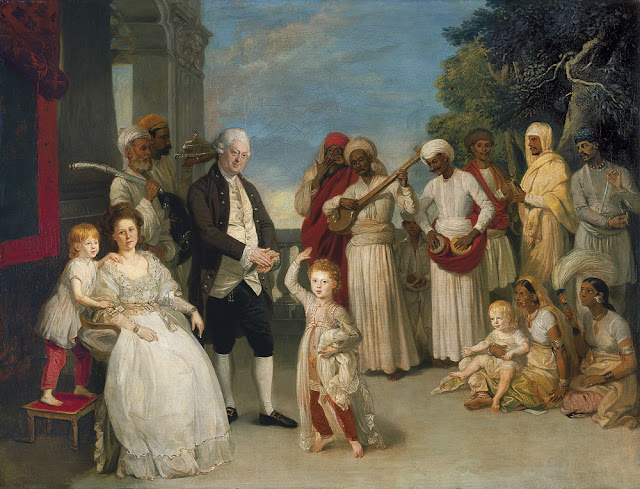 |
| Jean-Honoré Fragonard (France) The Swing ca. 1775-80 oil on canvas National Gallery of Art, Washington DC |
Enwezor: The nature of the materials you use has been central to the discussion of your work in recent years, especially your proclivity for and insistence on materials that are readily available, cheap, mass-produced; materials that both mimic 'kitsch' and deride the excesses of our throw-away, consumer-driven culture. For me there is, in this choice of cheap, quotidian materials such as plastic, aluminum foil, and cardboard, a strategy to contaminate the very nature of art's relationship to high culture, and to form a critique of the preciousness of sculptural practice. What led you to these types of materials for your work?
Hirschhorn: The choice of materials is important. I want to make simple and economical work with materials that everyone knows and uses. I don't choose them for the value of their appearance. I hate art made of noble materials. I don't understand why one attaches value to a material, whether it is clean metal, marble, glass, fine wood, big screens, empty space, and enormous, heavily framed objects, etc. I don't believe these are contemporary expressions. I am against using materials or forms that attempt to intimidate, seduce, or dominate rather than encourage reflection. For the activity of reflection, material does not matter. The materials I work with are precarious. This means that their temporal existence is clearly determined by human beings, not by nature.
– from an interview by Okwui Enwezor with Swiss sculptor Thomas Hirschhorn (previously seen and heard here) published by the Art Institute of Chicago in 2000
 |
| Pierre-Henri de Valenciennes (France) Study of Clouds over the Roman Campagna ca. 1782-85 oil on paper National Gallery of Art, Washington DC |
 |
| Pierre-Henri de Valenciennes (France) View of the Convent of Ara Coeli, Rome 1780 oil on paper Louvre |
 |
| Pierre-Henri de Valenciennes (France) Storm by a Lake 1780 oil on paper Louvre |
 |
| Simon Denis (Belgium) View of Monticelli near Tivoli late 18th century oil on paper private collection |
 |
| Caspar van Wittel (Netherlands) The Darsena, Naples ca. 1700-1718 oil on canvas Museo Thyssen-Bornemisza, Madrid |
 |
| Francesco Foschi (Rome) Winter Landscape with Peasant Family ca. 1750-80 oil on canvas Museo Thyssen-Bornemisza, Madrid |
 |
| Francesco Foschi (Rome) Winter Landscape with Figures ca. 1750-80 oil on canvas Museo Thyssen-Bornemisza, Madrid |
 |
| Marco Ricci (Venice) Winter Landscape ca. 1728-29 oil on canvas Museo Thyssen-Bornemisza, Madrid |
 |
| Paul Sandby (England) The Meteor of 1783, Windsor watercolor 1783 Royal Collection, Great Britain |
 |
| Giambattista Tiepolo (Venice) Death of Sophonisba ca. 1760 oil on canvas Museo Thyssen-Bornemisza, Madrid |
 |
| Johan Zoffany (Germany) Group Portrait with Sir Elijah and Lady Impey ca. 1783-84 oil on canvas Museso Thyssen-Bornemisza, Madrid |
 |
| Jacques Antoine Beaufort (France) The Oath of Brutus ca. 1771 oil on canvas Los Angeles County Museum of Art |
 |
| Carlo Innocenzo Carlone (Venice) Study for Two Angels on a Balustrade 18th century oil on paper Los Angeles County Museum of Art |